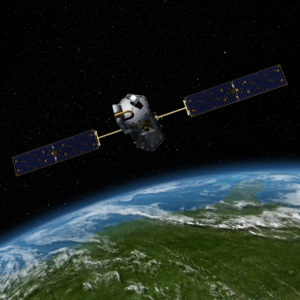
By Ray Grigg —
The pressure is building to reduce global carbon emissions. At each meeting of the United Nations’ Conference of the Parties (COP), the urgency becomes more palpable.
The Lima meeting of COP 20 in December, 2014, failed to reach the preliminary commitments necessary for the binding international agreements expected at the COP 21 meeting in Paris in December, 2015. France is getting nervous because its reputation will be sullied if the Paris COP is a failure—French President Francois Holland made this very clear to Prime Minister Stephen Harper during an autumn 2014 visit to Ottawa.
With the Kyoto Protocol expired and without a binding replacement agreement from subsequent COP meetings in Cancun, Copenhagen, and Durban, the default position has been for individual countries, provinces, and communities to do the best they can to reduce emissions. This approach has been helpful but not sufficient. Almost all of Canada’s reduced emissions have come from provincial initiatives, not federal. Most other countries have been unable to meet their voluntary reduction targets.
Meanwhile, international agencies have been carefully charting carbon emissions for hopeful signs. But these signs are rare. In 2012, for example, the increase in carbon emissions of 1.4% was less than the increase in GDP of 3.4%, indicating that the world economy is beginning to decouple from fossil fuels by becoming more efficient. In 2013, carbon emissions crept up by 2.3% while GDP rose by 3.3%. In 2014, emissions rose by 2.5% while GDP increased by 3.3%. If climate change is going to be slowed and reversed, however, total global emissions must not just trail GDP but must be reduced by a yearly average of at least 2.5% until all emissions reach zero on or before 2100. Any delays now will mean steeper future reductions.
Two lessons are to be learned from these statistics. First, efficiency alone in a world of expanding GDP is unlikely to bring about sufficient carbon emission reductions. And second, although the accomplishments of efficiency are mostly symbolic, they are nonetheless important. Every factory that uses less energy reduces emissions. The same is true for every new car that burns less fuel, and for every LED bulb that replaces an incandescent one. Statistics confirm that every individual choice, no matter how small, contributes to measurable environmental benefits.
Another development is promising. The prestigious journal, Natural Geoscience, recently reported that more than half of all known fossil fuel reserves on the planet will have to remain unburned if we are to avoid dire climate change. With this realization, hundreds of the world’s financial institutions, foundations, and universities are beginning to transfer billions of dollars of investments from coal, oil, and gas to renewable energies.
But time is crucial and the numbers are daunting. Global yearly carbon dioxide emissions are now, as of the beginning of 2015, about 37 gigatonnes. To translate this number into slightly more approachable terms, this is 37,000 million tonnes. The wisps of smoke drifting up from a hunter-gatherer’s cooking fire or from a solitary country cottage makes our planet seem very large. But 37,000,000,000 tonnes of carbon dioxide is a declaration that our fires have grown sufficiently large to influence the planet we occupy. So we should not be surprised if our emissions are changing climate, acidifying oceans, melting ice caps, raising sea levels, and driving species to extinction.
These consequences are being confirmed with sobering statistics:
• Six months ago, the US National Oceanic and Atmospheric Administration measured the world’s average temperature at a new record of 16.2°C, 1.3°C higher than than the 20th century average. The 10 hottest years since 1880 occurred in the 15 years between 1998 and 2013.
• The pre-human extinction rate for species was 0.1 per million per annum; the present rate is somewhere between 100 and 1,000, a rate that is 1,000 to 10,000 times normal.
• For centuries prior to 1800, sea level rise was essentially zero; from 1900 to 2000 it was 1.7 mm per year; from 1990 to 2013 it increased to 3 mm. The total sea level rise by 2100 is expected to be about 0.5 m. But many variables could increase this number. Earth’s average atmospheric carbon dioxide concentrations are expected to reach 400 ppm sometime in 2015. The last time concentrations were this high, about 3 million years ago, sea levels stabilized at about 10 metres above present levels. This suggests sea level rise will be continuous for centuries, presenting colossal challenges for coastal cities, settlements, and agriculture.
The importance of reducing carbon dioxide emissions continues to increase exponentially. This means that 2015 will be an even more crucial year for taking corrective action. The longer we procrastinate, the more radical and difficult must be our future reduction measures.
If our inclination to inaction continues, we may reach a time when the problem of climate change is unstoppable and unsolvable. Unfortunately, we don’t know when this time will occur. We may have already reached and passed it. But we can be virtually certain that continued delays will only make the challenges and the consequences increasingly difficult—for our climate, for our oceans, for innumerable species, and for civilization as we know it. Whether 2015 becomes a year for optimism remains uncertain.
Ray Grigg is a weekly environmental columnist for the Campbell River Courier-Islander. He is the author of seven internationally published books on Oriental philosophy, specifically Zen and Taoism.
